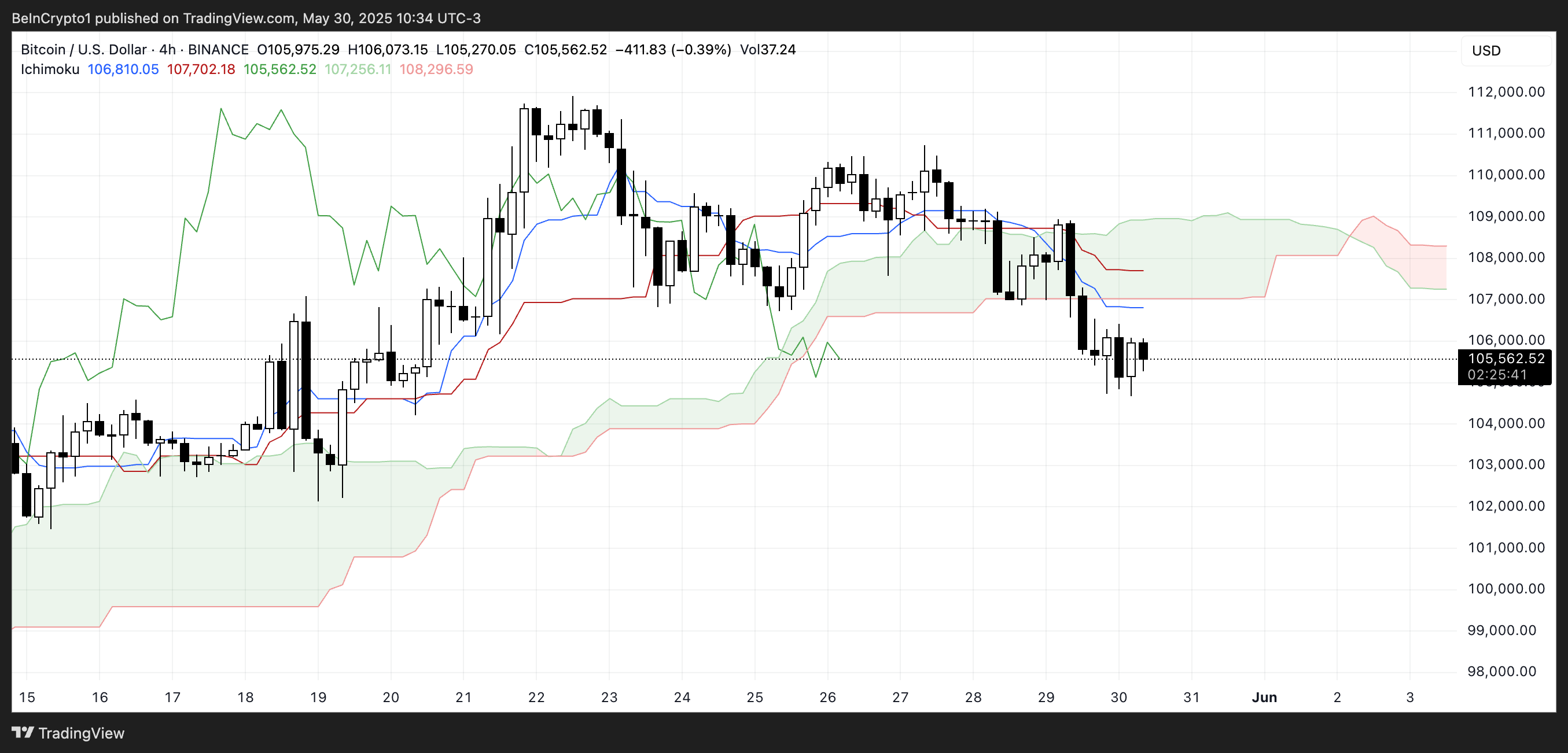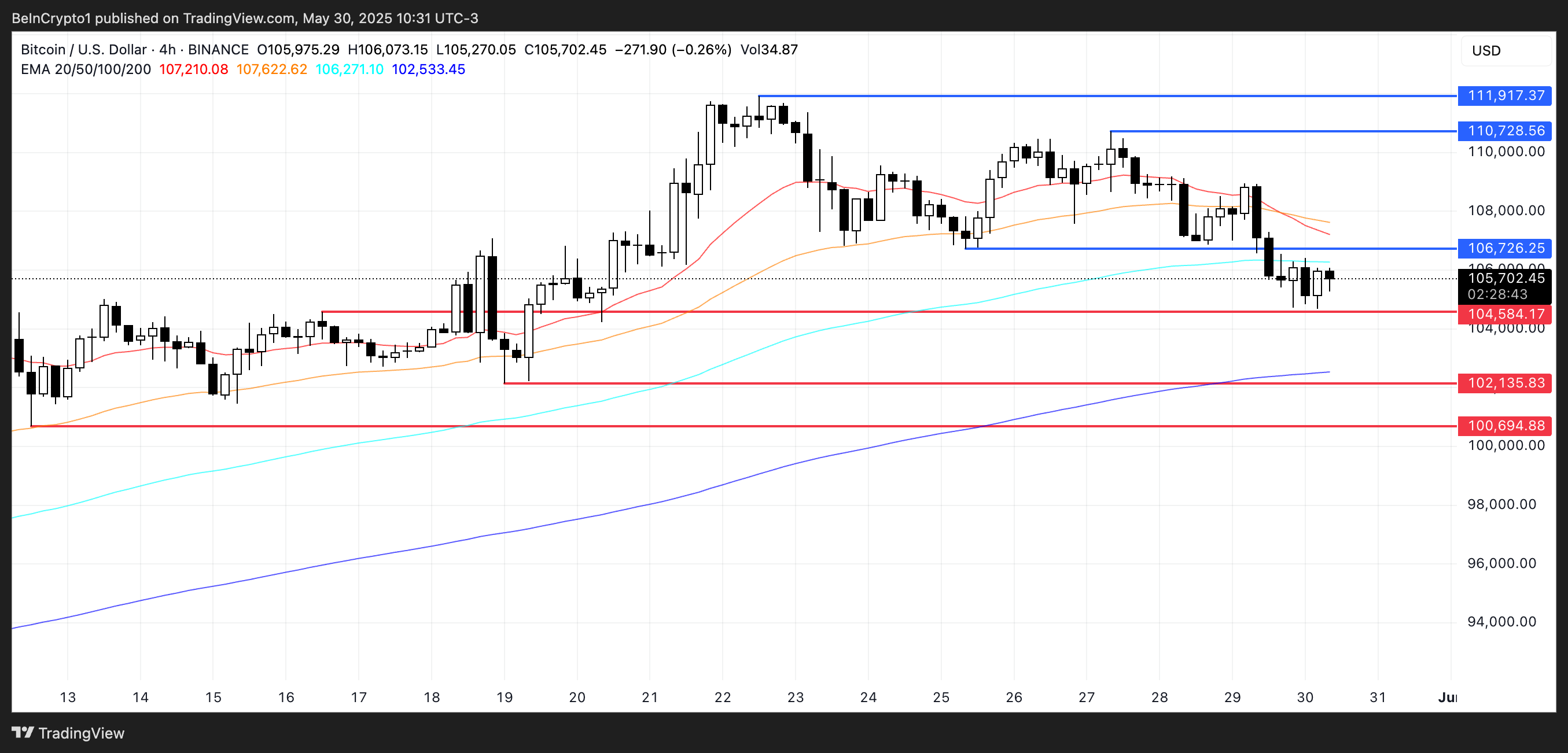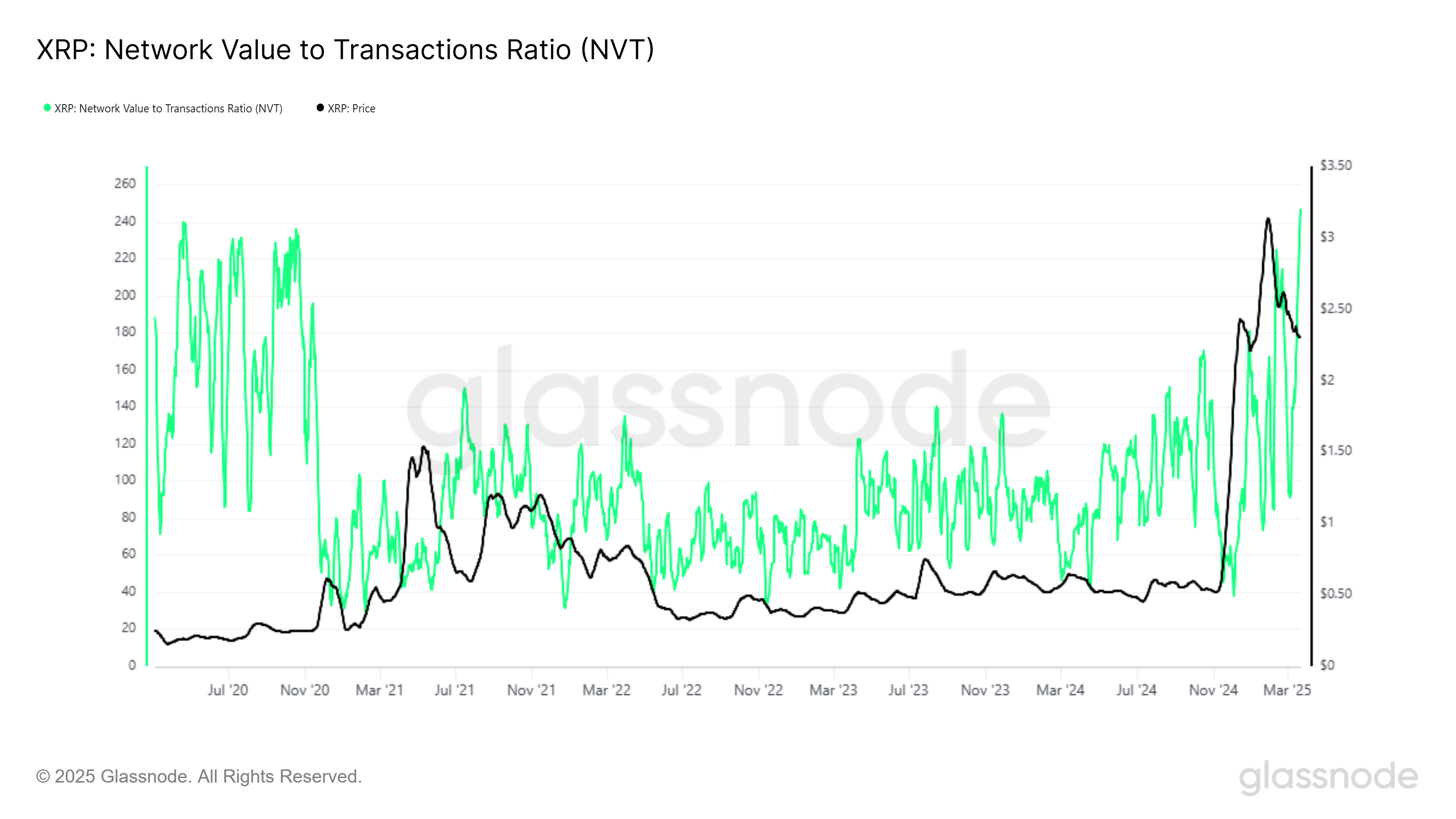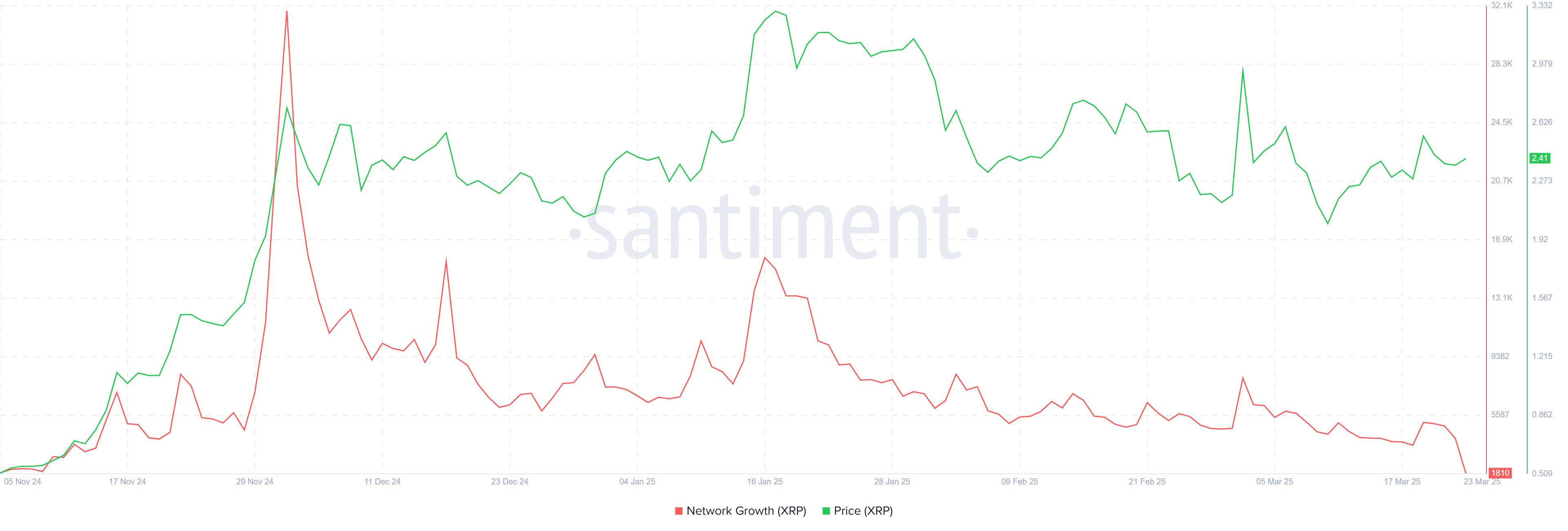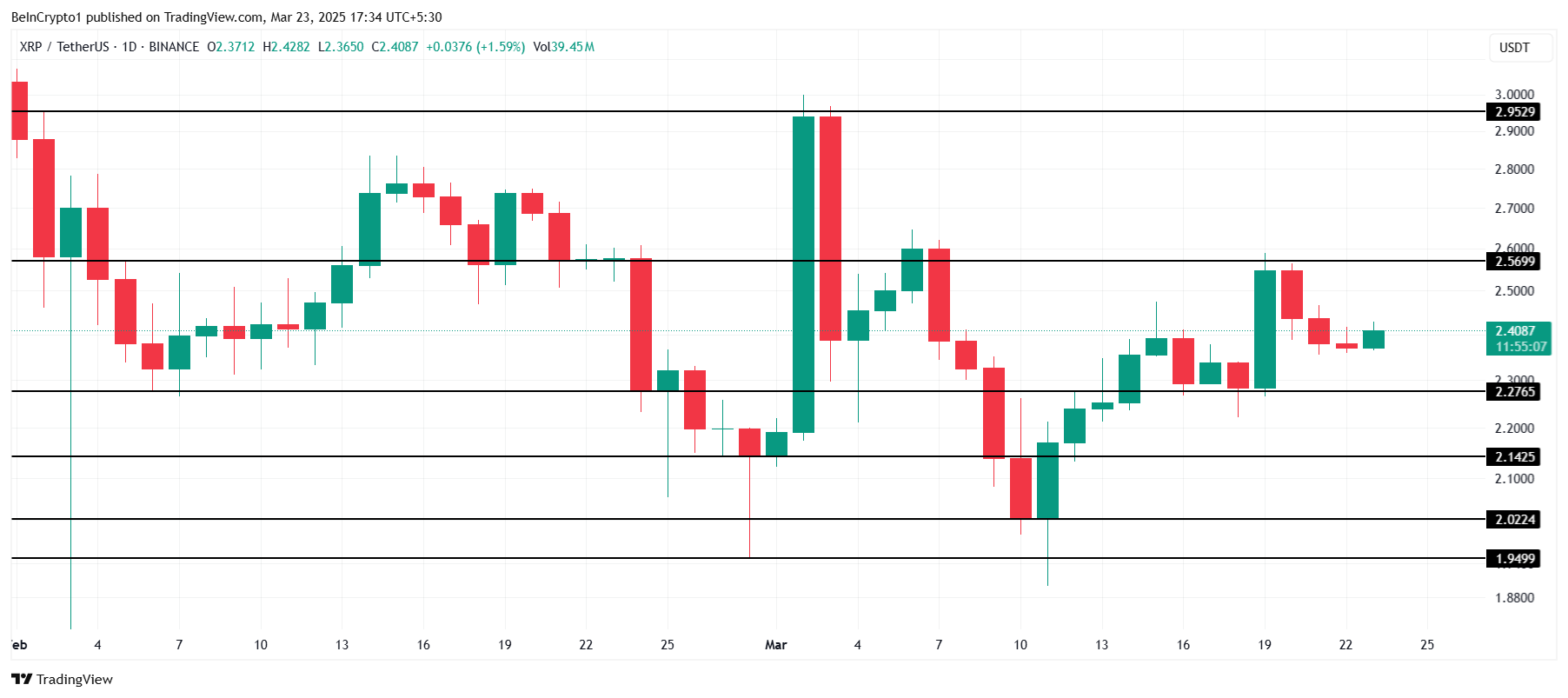With the end of March, Q1 2025 is also coming to a conclusion. This quarter was not the best for the crypto market, with its excessive losses and extreme volatility, similar to how meme coins operate.
Discussing the bane of the meme coin market, Harrison Seletsky, the Director Of Business Development at Digital Identity Platform SPACE ID, talked about the role of a strong investor base.
“Hype can move the price of a memecoin up, but they also collapse just as fast if there is no interest to sustain them, which is usually the case. That’s why it’s so important to filter out the noise as much as possible,” Seletsky noted.
Thus, BeInCrypto has analyzed five meme coins that have stood the test of time and volatility and are preparing for further gains in April.
Fartcoin (FARTCOIN)
FARTCOIN has emerged as one of the top-performing meme coins this month, rising 107% to trade at $0.61. This impressive increase has allowed the meme coin to recover all the losses it faced in March and February.
To recover its January losses, FARTCOIN will need to continue its upward momentum. The key resistance level to watch is $0.69. A successful break above this level and a move toward $1.00 could signal the beginning of a sustained rally, potentially pushing the price higher in the coming days.
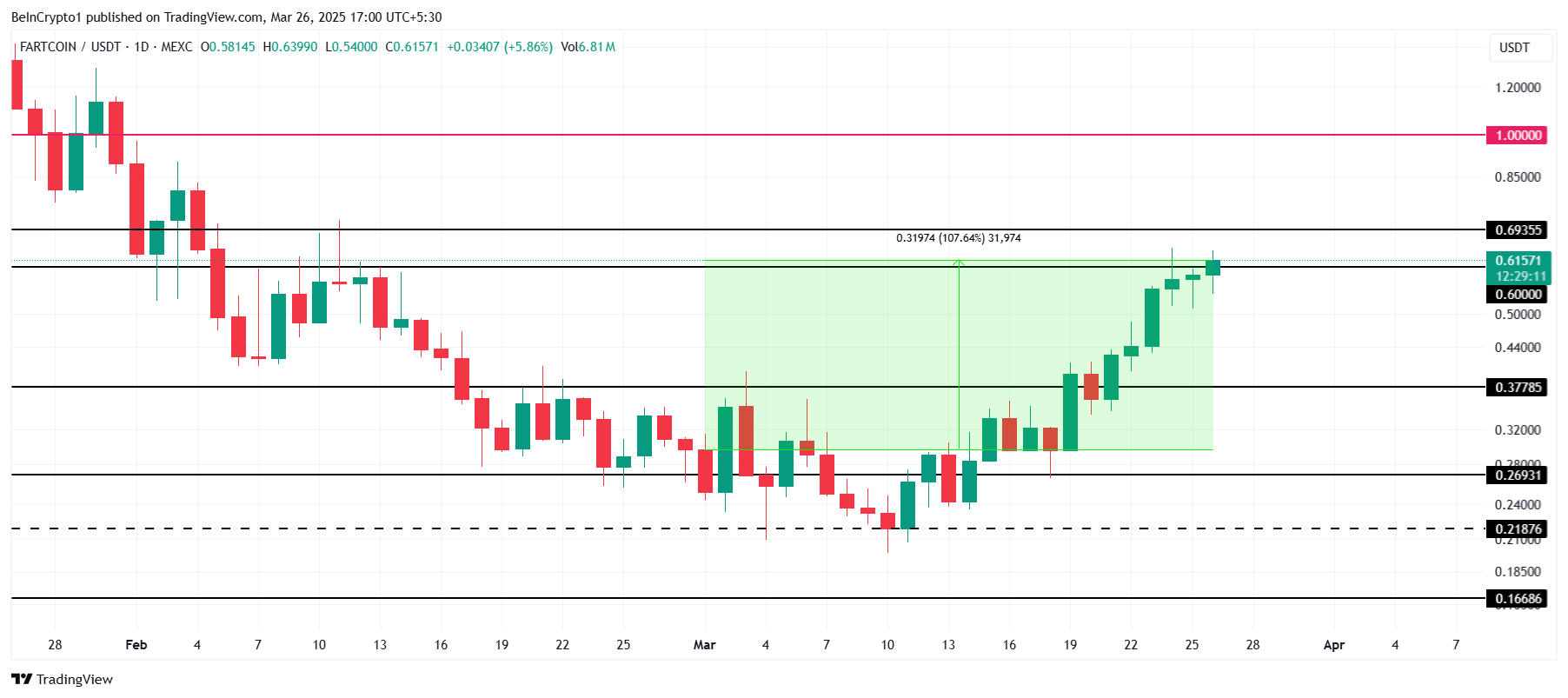
However, if FARTCOIN fails to hold $0.69 as support and misses the $1.00 target, it could face a sharp decline. A drop back to $0.37 would erase much of the recent gains, invalidating the bullish outlook. This pullback could shift investor sentiment towards caution, stalling further growth.
Cheems (CHEEMS)
CHEEMS has emerged as one of the top-performing meme coins this month, rising 130% since the beginning of March. Currently trading at $0.000001927, the altcoin has also posted a new all-time high (ATH) of $0.000002179.
The shift in broader market cues toward recovery has likely sparked newfound interest among CHEEMS investors. If the positive trend continues, the meme coin could push toward $0.000002500, further fueling its rally.
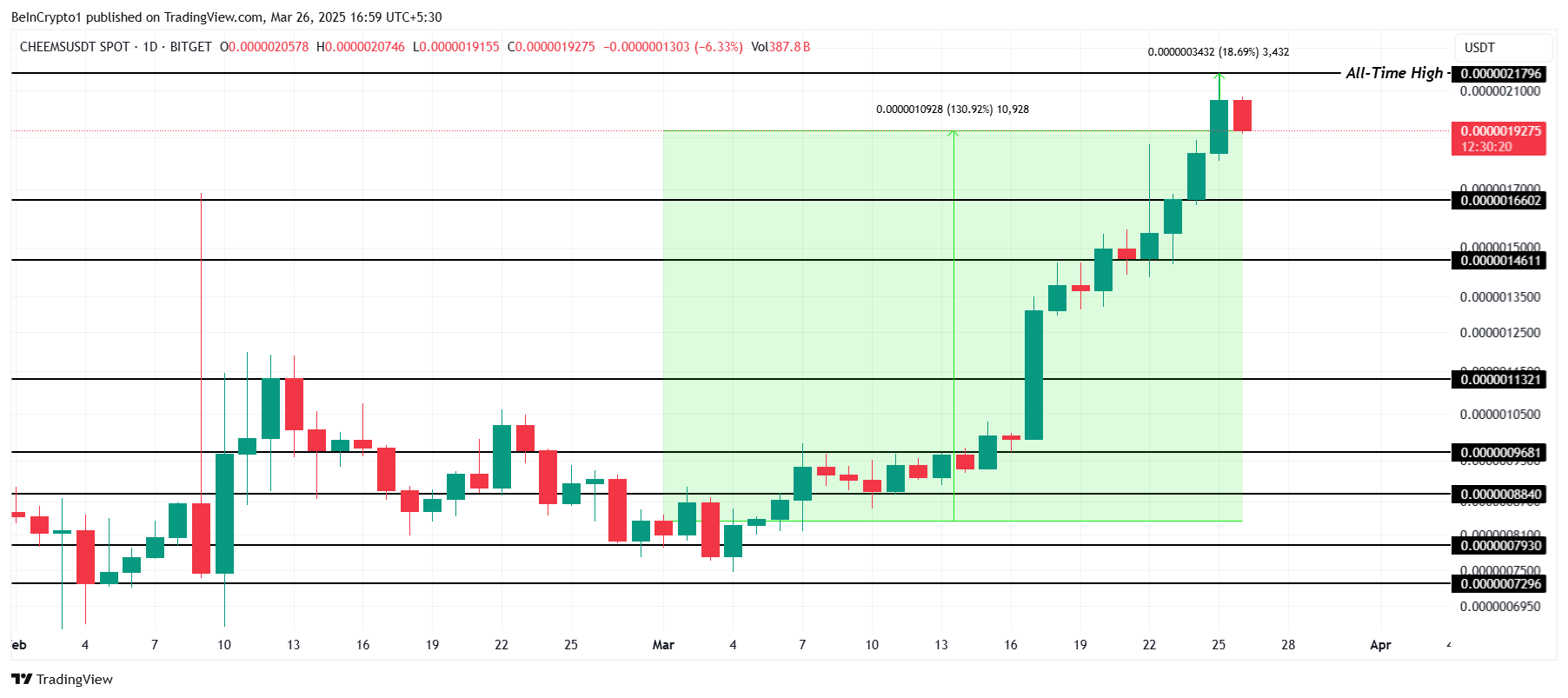
However, if the bullish signals begin to fade or if investors start selling their holdings, CHEEMS could face downward pressure. A fall toward the support level of $0.000001660 or lower would invalidate the bullish outlook. This potential decline could halt the altcoin’s growth and shift market sentiment.
Mubarak (MUBARAK)
MUBARAK launched this month and has already experienced notable volatility. The meme coin is up 95% since its launch, with the current all-time high (ATH) at $0.221. This strong early performance reflects investor optimism and a positive market reception for altcoin’s entry into the crypto space.
Currently trading at $0.145, MUBARAK is aiming to break through the resistance levels at $0.149 and $0.173. Successfully clearing these levels would likely lead to a new ATH beyond $0.221. Such a breakthrough would demonstrate continued bullish momentum and attract more investors to the altcoin.
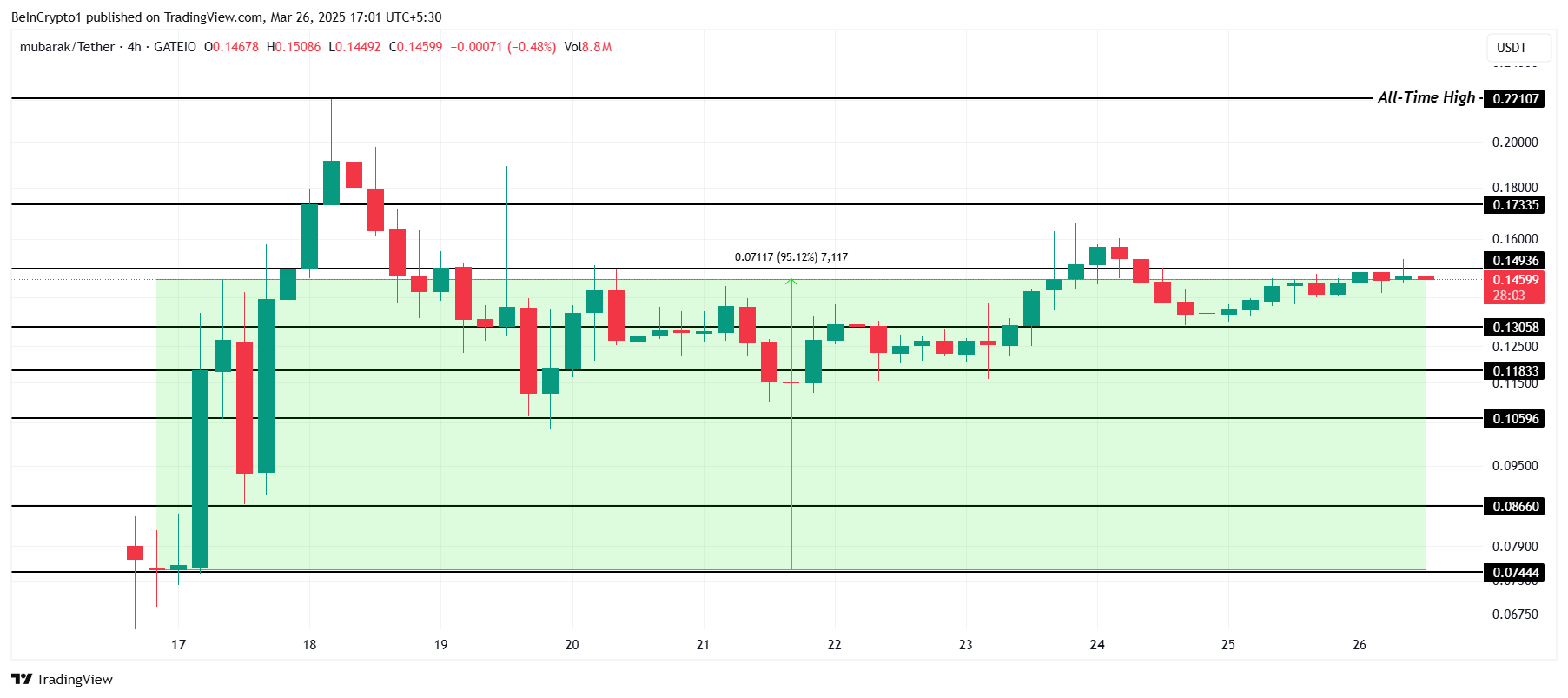
However, if MUBARAK fails to capture sufficient investor attention, the price could dip to $0.130. A further decline could push the altcoin down to $0.118 or $0.105, invalidating the bullish outlook. Such a drop would signal weakening market sentiment and potential setbacks for MUBARAK’s growth.
Dogecoin (DOGE)
Dogecoin has not registered exceptional gains this month but managed to break out of a two-month downtrend. The altcoin rose 22% in a week, trading at $0.203. This recent upward movement signals a potential shift in market sentiment, suggesting that Dogecoin could see more positive momentum.
Given the current market conditions, Dogecoin is likely to continue its gradual uptrend. This momentum could help the altcoin breach the $0.220 resistance and move toward $0.267. If this upward trend continues, Dogecoin could see sustained growth and attract additional investor interest.
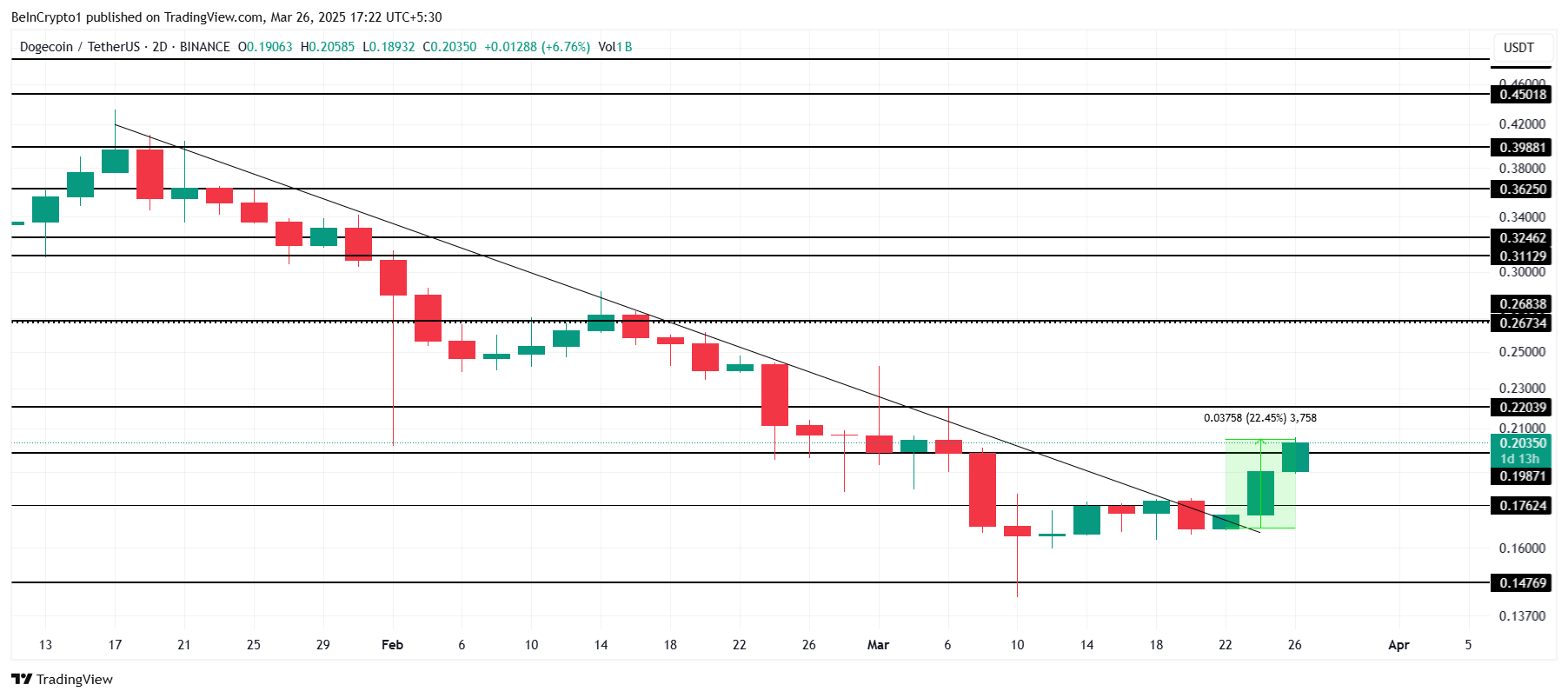
However, if Dogecoin fails to breach the $0.220 level, the price may struggle to maintain its upward movement. A failure to hold above this level could lead to a drop toward $0.176 or even $0.147, invalidating the bullish outlook and potentially extending the losses experienced by the altcoin.
Peanut The Squirrel (PNUT)
PNUT has experienced a 17% loss this month but is closer to recovering its losses. Currently trading at $0.221, the meme coin is beginning to show signs of recovery. The altcoin’s recent price movement signals that it may be positioned for potential growth if market conditions improve.
The primary target for PNUT is to breach the $0.260 resistance and flip it into a support level. If successful, this would pave the way for the meme coin to reach the next key resistance at $0.330. A move above $0.260 would signal further bullish momentum for PNUT.
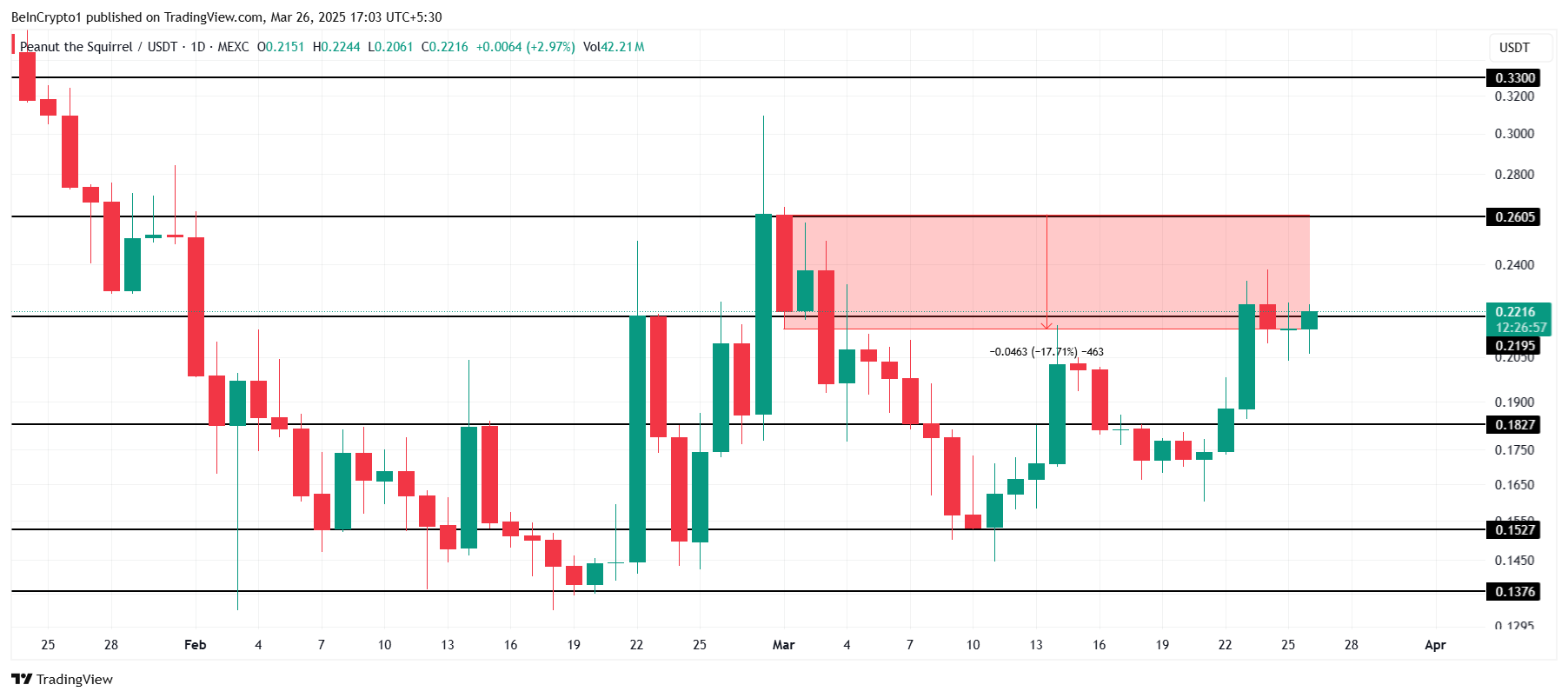
However, if PNUT fails to breach $0.260 and the price struggles to hold, it could fall back to $0.219. A further drop to $0.182 would invalidate the bullish outlook, erasing recent gains and potentially setting the stage for a prolonged downtrend.
The post 5 Meme Coins to Watch in April 2025 appeared first on BeInCrypto.








